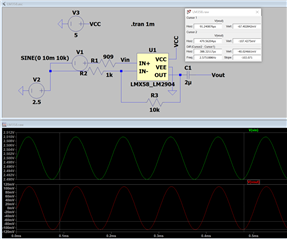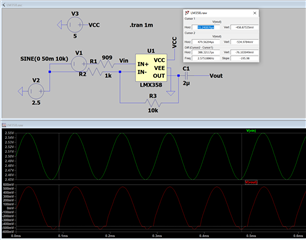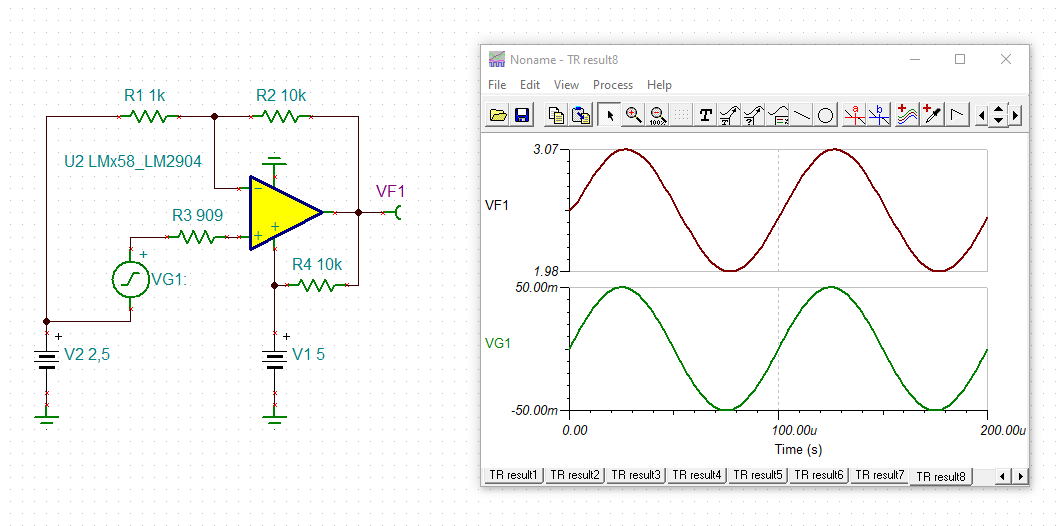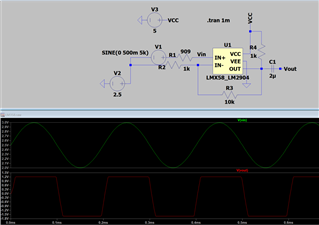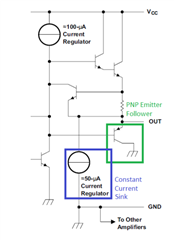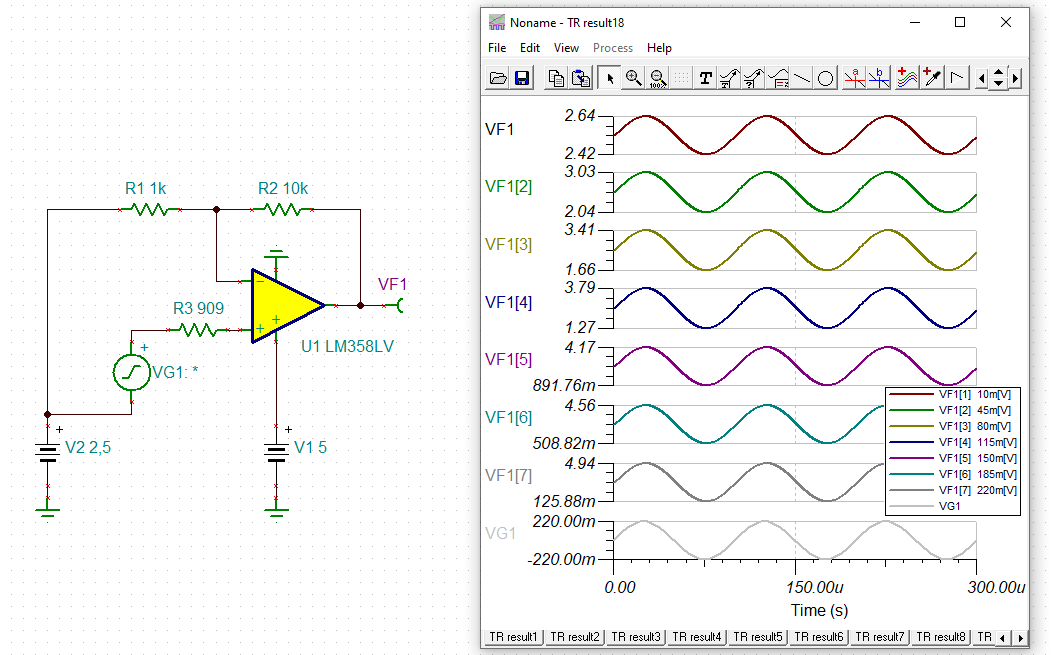Other Parts Discussed in Thread: TINA-TI, LM358, LM358LV
Hi team,
I am using LM358A as a non-inverting amplifier to simulate the circuit. When the input signal is 10mV, the output waveform looks normal; when the input signal is 50mV, there will be a small steps in the negative half cycle of the output waveform. What is the reason for this phenomenon? ? Is it normal?
